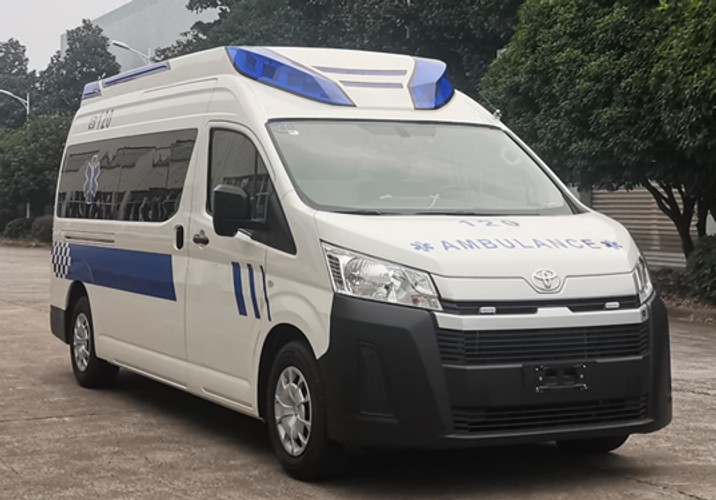Introduction
The role of an ambulance has evolved far beyond mere transportation. Today, it is a mobile, high-acuity emergency room, the first critical link in the chain of survival. For EMS directors and fleet managers, choosing the right ambulance is a strategic decision that impacts response times, crew safety, and ultimately, patient care. As a leading ambulance manufacturer, we are at the forefront of integrating cutting-edge technologies and designs. Here are seven key trends defining the future of advanced life support (ALS) ambulances and emergency medical vehicles.

1. Enhanced Vehicle Safety and Crashworthiness
The safety of EMS professionals is paramount. Modern ambulance manufacturing prioritizes robust vehicle safety features that go standard commercial chassis. This includes:
High-Strength Materials: The use of high-strength, low-alloy steel in the patient module body construction enhances structural integrity.
Crash Tested Systems: Seats, cot fasteners, and cabinetry are rigorously crash-tested to remain secure during an impact, protecting both crew and patient.
Advanced Driver-Assistance Systems (ADAS): Features like collision avoidance, lane-keeping assist, and electronic stability control are becoming standard, making Type I, Type II, and Type III ambulances safer to operate in all conditions.
2. The Integration of Telemedicine and Connectivity
The "connected ambulance" is a reality. High-speed data links allow paramedics to transmit vital signs, ECG readings, and even live video from the scene directly to the receiving hospital. This telemedicine integration enables:
Faster Diagnoses: Physicians can guide critical interventions en route, shortening the time to treatment for strokes or heart attacks.
Improved Resource Allocation: Hospitals can be better prepared for the patient's arrival, streamlining the handover process.
3. Ergonomic and Efficient Interior Design
A well-designed interior directly impacts crew efficiency and reduces fatigue. Smart ambulance module design focuses on:
Ergonomic Workflows: Everything from the placement of medical supplies to the height of the CPR seat is optimized for intuitive use in a high-stress environment.
Easy-to-Clean Surfaces: Antimicrobial, seamless surfaces and flooring simplify decontamination, reducing infection control risks and vehicle downtime.
Smart Storage: Customizable cabinets and modular ambulance interiors ensure that every piece of equipment has a secure, accessible home.

4. Focus on Sustainable and Electric Ambulances
With a growing emphasis on sustainability, the industry is exploring alternative powertrains. Electric ambulances (e-ambulances) offer significant benefits:
Reduced Emissions: Idling silently at the scene without emitting fumes is better for the environment and public health.
Operational Cost Savings: Lower fuel and maintenance costs compared to traditional diesel engines provide a strong return on investment (ROI) for fleet operators.
Mobile Power Source: The large battery capacity can power all medical equipment without the need for a loud, secondary generator.
5. Modular Design for Flexibility and Serviceability
Modular ambulance bodies offer distinct advantages over van conversions (Type II). They are built on a separate chassis cab, allowing for:
Greater Customization: The interior layout can be tailored to the specific needs of a service, whether for critical care transport or routine patient transfers.
Easier Maintenance and Repair: Modules can often be serviced or even swapped without taking the entire chassis out of service for extended periods.
6. Improved Patient Comfort and Climate Control
A comfortable patient is a more stable patient. Modern patient transport vehicles feature advanced climate control systems that maintain precise temperatures for both the patient compartment and the cab. This is crucial for managing patients with temperature-sensitive conditions and for ensuring crew alertness.
7. Data-Driven Fleet Management)
Finally, modern ambulances are equipped with technology that provides valuable operational data. Fleet managers can monitor vehicle health, location, fuel consumption, and idling times. This data is invaluable for preventive maintenance schedules, optimizing deployment strategies, and extending the lifecycle of emergency vehicles.
Conclusion
The future of emergency medical services is being built today on the factory floor. By embracing these trends in safety, connectivity, and design, ambulance manufacturers like us are proud to provide reliable, high-performance EMS vehicles that empower medical professionals to save more lives. When considering your next ambulance for sale or planning a fleet modernization, prioritizing these innovations will ensure you are equipped for the challenges of tomorrow.